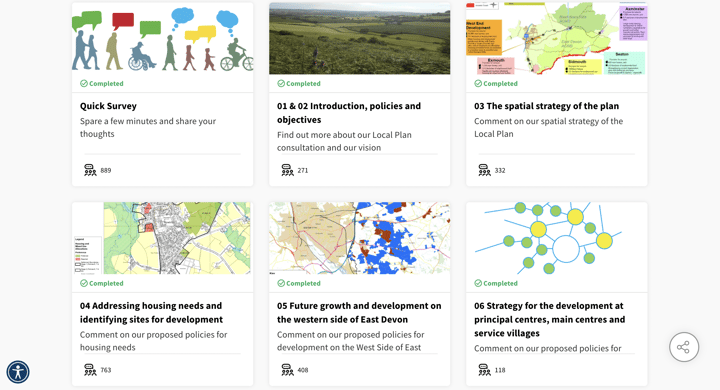5 examples of effective local planning engagements
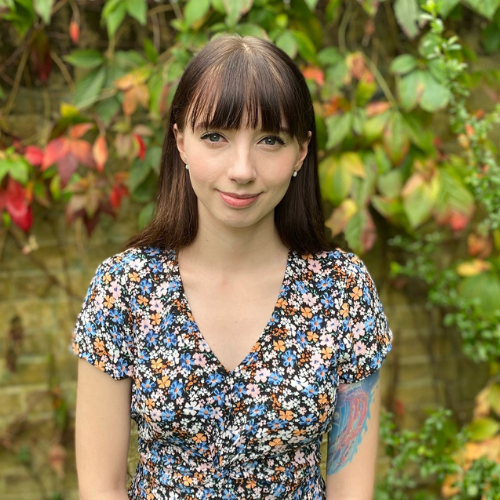
By Charlotte Cooper | 04/12/23 09:45
5 min read
Local plans are HUGELY important. Shaping the very fabric of the neighbourhoods where we live, work and play, it’s crucial for as much of the community to be involved as possible.
See how Commonplace can increase participation in your Local Planning consultation
Local Plans form the bedrock of how the local authority plans to build, protect and enhance its local communities. Setting out the roadmap for an area’s future developments, these plans work as an infrastructure guide showcasing exactly what developments will be made and when. Everyone agrees that we need to engage more people through the process, but helping residents to meaningfully navigate through issues and options, regulation 18, regulation 19 and examination can prove difficult.
The first stage of any Local Plan is gathering evidence from the community so the local planning authority can best divide up resources and accurately see what supporting infrastructure will be needed. The more people participate, the more accurate a plan you have- this is where a digital first engagement strategy comes in.
To help inspire your own planning methods, we’ve gathered five effective local planning consultations and are here to show you how exactly they’ve gotten their community to engage.
1. Enfield local plan
Let’s start with the Enfield Local Plan. Their 12-week consultation period gathered the thoughts and reactions of the community to help inform the 2036 Local Plan.
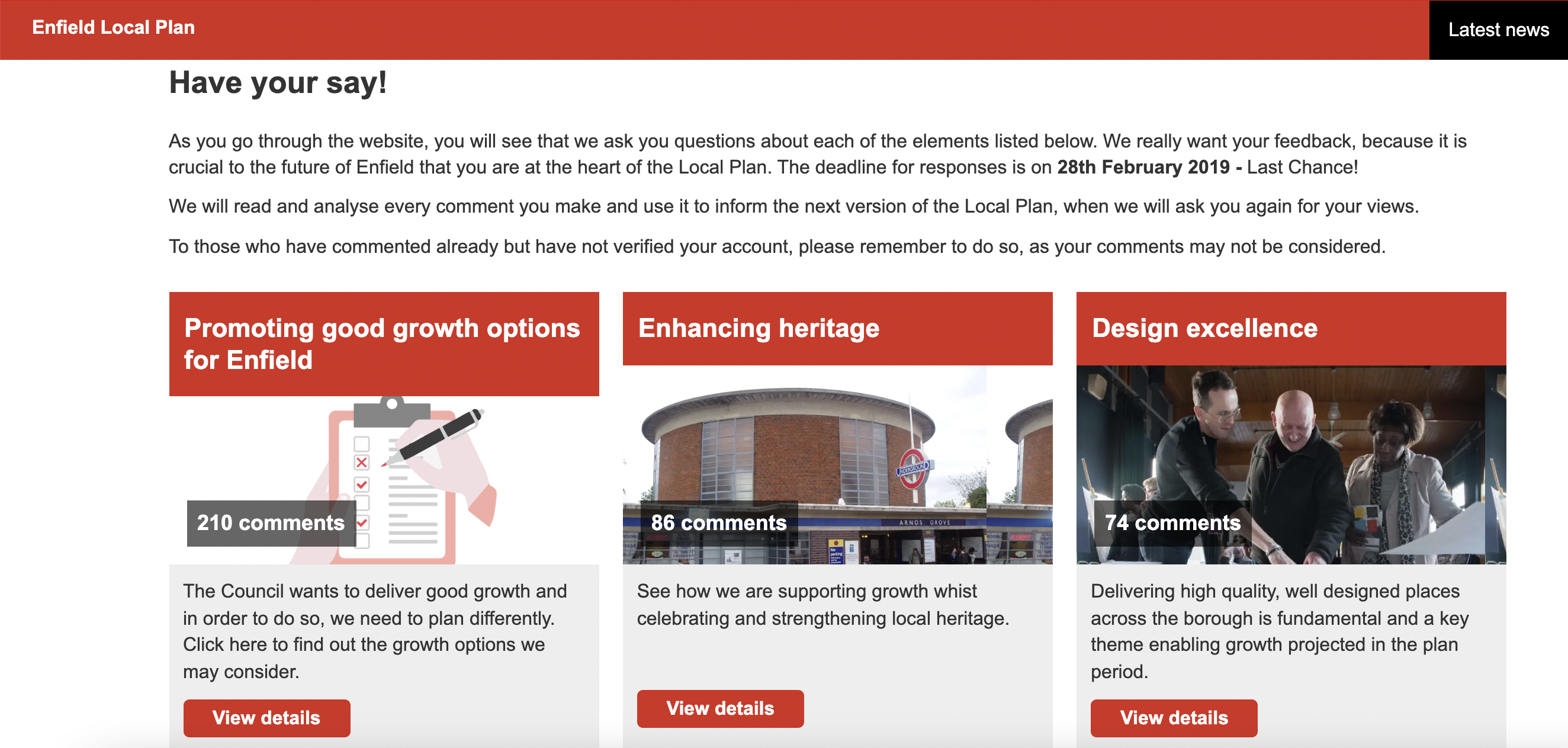
Their engagement website consisted of a number of different project pages, each outlining ideas for the plan including:
- Enhancing Heritage
- Promoting Good Growth Options for Enfield
- Promoting a Competitive Economy
- Community and Social Infrastructure
- Sustainable Movement and Transport
Each gave options and details about potential works in the future with the public freely allowed to comment.
They also utilised the Commonplace ‘About’ page to outline exactly what a Local Plan does, link all the documents they’ll be reviewing as well as highlighting their in-person local plan drop-in sessions so people can talk to them directly.
All in all the website received almost 12,000 visitors and 1633 total contributions. Following the consultation, they confirmed that ‘All of the feedback from the consultation will be carefully analysed and considered to inform the next version of Enfield’s Local Plan.’
Check out their planning engagement website here.
2. Camden Site Allocations Local Plan
Camden Council is currently setting up their Site Allocation Plan thanks to the amazing response they got from their public consultation. Created to make sure that new developments help meet the needs of local communities and business, they received almost 3,500 unique visitors as well as 203 responses to their proposed developments.
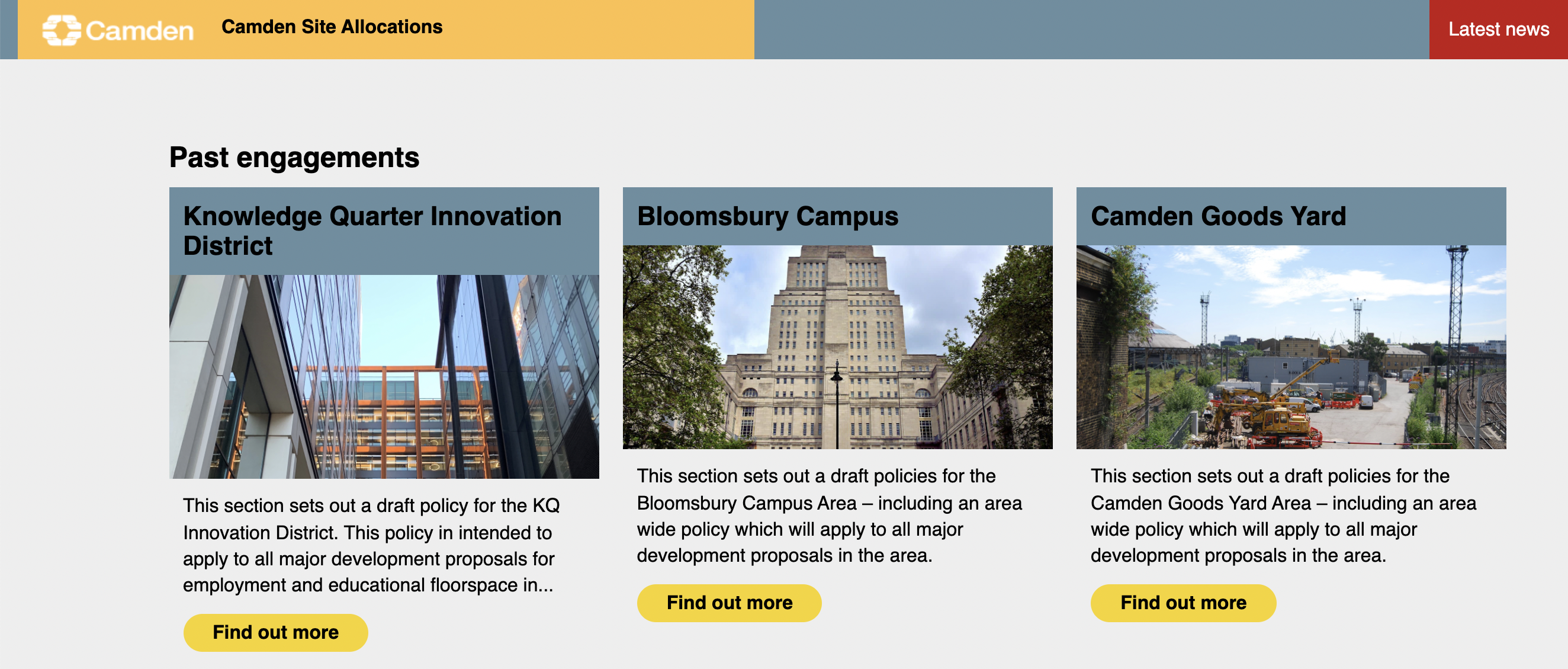
Over the past few years, Camden has been experiencing massive population growth so the Local Plan needed to set out, not just new housing ideas for this boom in people, but infrastructure to support their growing community as well.
‘The London Plan 2021 sets a target to deliver 10,380 additional homes by 2029 this is in addition to the targets set out in the Camden Local Plan 2017 for 695,000sqm of additional office floor space and 30,000sqm of additional retail floorspace.’ - Camden Council
The council was very aware that Camden only has finite space, so making sure that they’re making the most of local land and buildings was essential. This Site Allocation Local Plan is building on the policies in the adopted Local Plan by allocating a range of growth areas and almost 90 individual sites. To get the public’s opinions on each, they created several different project sites- all representing a different part of Camden. On each, the community could leave comments on proposed ideas as well as see where they would be happening on dedicated site allocation maps.
Check out their complete engagement site here.
3. East Devon Local Plan
East Devon District Council also relied on thorough community engagement when preparing a new local plan. The primary role of the Local Plan will be to guide and inform decisions on where development will take place in East Devon and be the key ‘turn to’ document that is used in determining planning applications.
In this consultation, they used Commonplace to make it available for anyone to comment on. They will take the comments received from the consultation and add these to further assessment and evidence gathering that the Council are undertaking - this will help with plan refinement and redrafting.
The plan itself will run from 2020 to 2040 and will be informed by a number of evidence studies and reports. The project itself showcases each individual aspect of the report, the community given the chance to comment on all of them.
The majority of the community is not going to have in-depth planning knowledge or understand exactly how Local Plans work, so having this information clearly available will help them understand, not only how they can help, but the impact this can have on where they live.
It all comes back to having an open and honest conversation with the local community, something that will help foster much more engagement in the long run.
Check out their project site here.
4. Cairngorms Views
Next up is Cairngorms National Park and how they’ve created a draft plan from their online consultation.
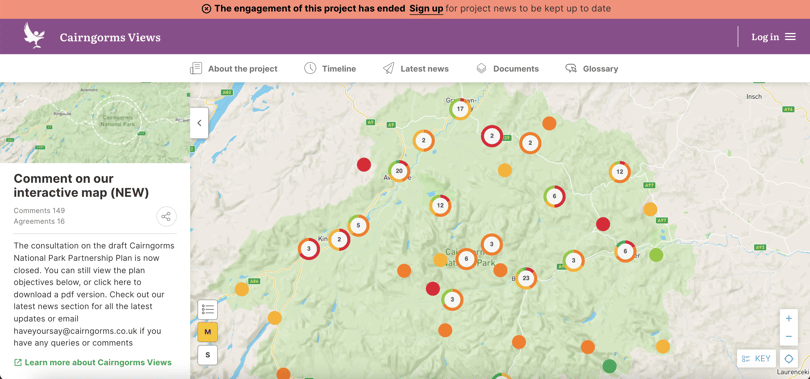
From June to September last year, they asked for local views on a range of major issues affecting the Cairngorms National Park. This included the climate emergency, local employment opportunities as well as housing and public transport. By setting up an interactive heatmap of the area, local residents could drop a pin and answer a short survey about that specific area. This gave the opportunity to see the exact places where people had issues/wanted work to be done.
They then took the subjects that were commented on the most and put them into three categories: Nature, People and Places. With almost 8,000 visitors and 982 contributions, they’ve now pulled together these themes into a Draft Plan and are still accepting responses from the public about how they can best put it into practice.
Thanks to the Commonplace Dashboard, it’s never been easier to filter responses. With filters available for sentiment, area, right down to the specific words used in the answer, you can easily segment your data and see the major areas that the community are talking about.
One thing the Cairngorms engagement website also shows is how creative you can get with the design. Every local area is different so every Local Plan will be different. Your engagement website can reflect that and not just by using the colours of the council’s logo.
From your choice of images, to the size of your messaging, with Commonplace, it’s easy to launch a local planning website that’s as visually engaging as it is useful. Just chat to our team about your design ideas and we’ll help bring them to life.
Check out the Cairngorms consultation here.
5. Lewisham Local Plan
Finally, let’s take a look at Lewisham’s Local Plan consultation and how that will help shape Lewisham all the way up to 2040.
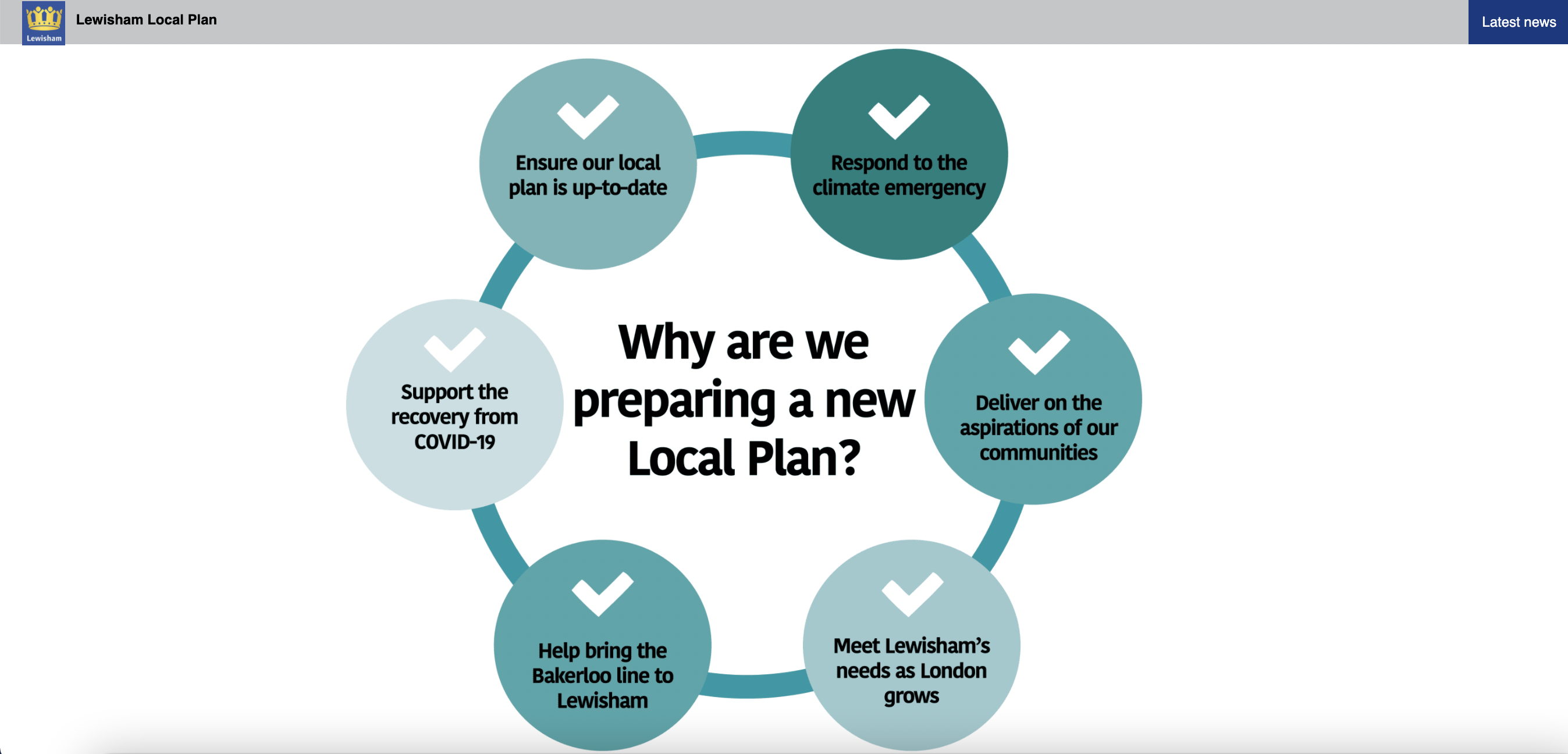
While the initial consultation has ended, they are still keeping the community up to date with a clear project timeline on their website and showing how the project will progress in the coming months. They’re also being completely open with all the information that’s been shared with the slides from their online informational sessions available to download.
The related documents and FAQs are also the first things that can be seen in their overview so information about the project is still clearly available to the public. Even once a project is finished, it’s crucial that the information is still easily accessible. This helps keep trust strong between the local Council and the public so they can see what work is going to be done and will be more likely to contribute to future projects.
Like all Commonplace Local Plan websites, there’s a big focus on getting as many people involved as possible. This is why it only takes one click to share it via WhatsApp, Facebook, Twitter or email. Thanks to their message being spread far and wide, they received over 14,000 visitors as well as over 3,000 contributions.
Check out their local planning website here.
At Commonplace, we know change begins with people. If you’re ready to get the community onboard with your next local plan review, simply book a free consultation and we’ll show you exactly how you can get as many people as possible involved.
.png)

